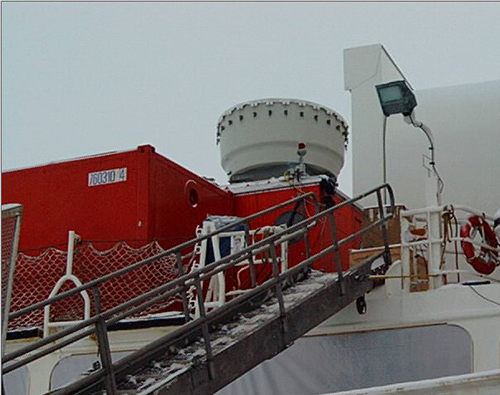Surface Heat Budget of the Arctic Ocean (SHEBA)

Did you know... Much of the Arctic is moderated by the ocean water, which can never have a temperature below –2 °C (28 °F). In winter, this relatively warm water keeps the North Pole from being the coldest place in the Northern Hemisphere, and it is also part of the reason that Antarctica is so much colder than the Arctic.
SHEBA was a National Science Foundation program designed to study Arctic atmospheric, sea-ice and ocean processes through a full annual cycle. In September of 1997, the Canadian icebreaker DesGroseilliers was frozen into the Arctic ice pack 570 km northeast of Prudhoe Bay, Alaska. A comprehensive suite of atmospheric, ocean and ice sensors were deployed from the DesGroseilliers and the surrounding frozen ice floe.
ESRL researchers supported the SHEBA program by developing automated, semi-attended cloud radar and depolarization lidar systems that ran for the duration of the program. The year long radar and lidar data sets were used in conjunction with radiometers operated by the Department of Energy ARM program to develop year-long retrievals of cloud properties, including crystal/droplet sizes, optical depths, water contents, and cloud boundaries through the depth of the trophosphere. These data sets have been made available both on CD and on the web.
In addition, a number of science investigations have contributed to the the understanding of annual variability of Arctic cloud microphysical properties, cloud radiative forcing, cloud mixed-phase properties, model parameterizations, and satellite comparison studies. (See Polar Team publications)
SHEBA Cloud Data